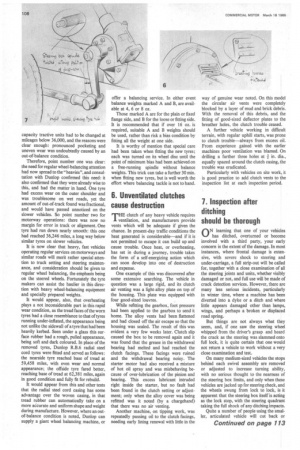6. Unventilated clutches cause destruction
Page 110

If you've noticed an error in this article please click here to report it so we can fix it.
IfHE clutch of any heavy vehicle requires ventilation, and manufacturers provide vents which will be adequate if given the chance. In present-day traffic conditions the heat generated is considerable—and if it is not permitted to escape it can build up and cause trouble. Once heat, or overheating, has set in during a journey, trouble takes the form of a self-energizing action which can soon develop into one of destruction and expense. One example of this was discovered after some extensive searching. The vehicle in question was a large rigid, and its clutch air venting was a light-alloy plate on top of the housing. This plate was equipped with four good-sized louvres. While refitting the gearbox, foot pressure had been applied to the gearbox to send it home. The alloy vents had been flattened and had closed off the air escape so that the housing was sealed. The result of this was evident a very few weeks later. Clutch slip caused the box to be removed again and it was found that the grease in the withdrawal bearing had melted and had reached the clutch facings. These facings were ruined and the withdrawal bearing noisy. The starter motor had also received a mixture of hot oil spray and was misbehaving because of over-lubrication of the pinion and bearing. This excess lubricant intruded right inside the starter, but no fault had been found in the clutch setting or adjustment; only when the alloy cover was being refitted was it noted (by a chargehand) that there was no air venting. Another machine, on tipping work, was repeatedly passing oil to the clutch facings, needing early lining renewal with little in the way of genuine wear noted. On this model the circular air vents were completely blocked by a layer of mud and brick debris. With the removal of this debris, and the fitting of good-sized deflector plates to the breather holes, the clutch trouble ceased. A further vehicle working in difficult terrain, with regular uphill starts, was prone to clutch trouble—always from excess oil. From experience gained with the earlier machines poor ventilation was blamed. On drilling a further three holes at in. dia., equally spaced around the clutch casing, the trouble was eradicated. Particularly with vehicles on site work, it is good practice to add clutch vents to the inspection list at each inspection period.




































































































































































